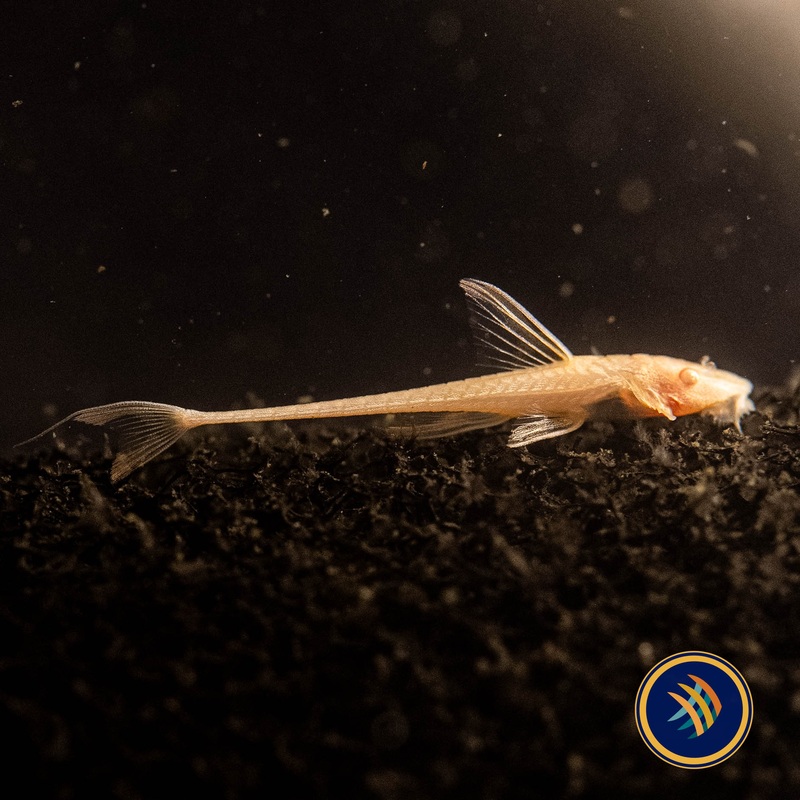The Albino Whiptail Catfish (Rineloricaria lanceolata), also known as the Chocolate Whiptail Catfish, is a fascinating species native to South America. Lets dive into some details about this intriguing fish:
- Classification: It belongs to the family Loricariidae.
- Distribution: Found in the upper Amazon River basin in Brazil and Peru.
- Habitat: Typically inhabits sandy environments with leaf litter.
- Maximum Standard Length: Up to 3.8 inches (9.5 cm).
- Aquarium Size: A pair can be kept in a tank as small as 18 x 15 x 12 (45 cm x 37.5 cm x 30 cm), but larger quarters are needed for a group.
- Maintenance: Consider a biotope setup with sand and dried leaves (such as oak and beech). Provide rock or wood caves for potential spawning sites. It thrives in both well-planted tanks and dim lighting.
- Water Conditions:
- Temperature: 77-82F (25-28C)
- pH: 6.0-8.0
- Hardness: 5-20H
- Diet: Omnivorous, feeding on aufwuchs (algae and small aquatic crustaceans). Accepts sinking dried foods, vegetable matter (blanched spinach, courgette, kale), and live/frozen fare like bloodworm or daphnia.
- Behavior and Compatibility:
- Peaceful catfish that can be combined with various species.
- Suitable tankmates include small characins, Apistogramma, Corydoras, and other quiet Loricariids.
- Avoid aggressive tankmates to prevent competition for food.
- Best kept in a small group.
- Sexual Dimorphism: Mature males develop odontotes on the head and pectoral spines, which females lack.
- Reproduction: Breeds relatively easily. Start with a group of 6 or more juveniles to increase chances of obtaining a pair. Provide spawning caves
 Sale!
Sale!
Reviews
There are no reviews yet.